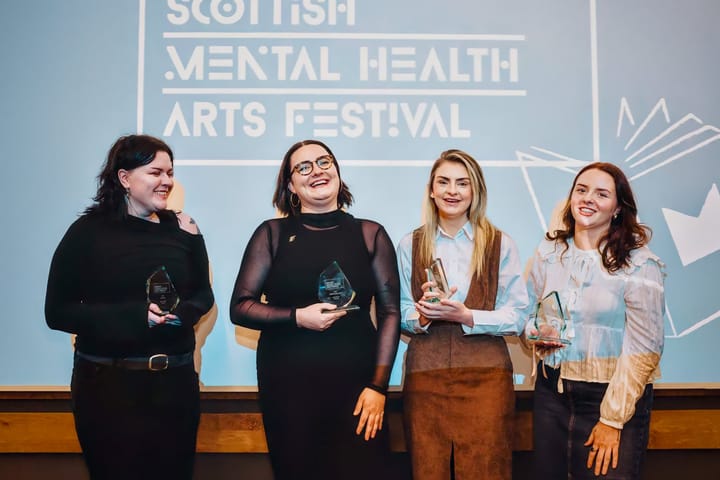Exploring the Literary Magic of Pushing Out the Boat
We chat with Naomi Greenwood about the evolution and impact of Pushing Out the Boat magazine.
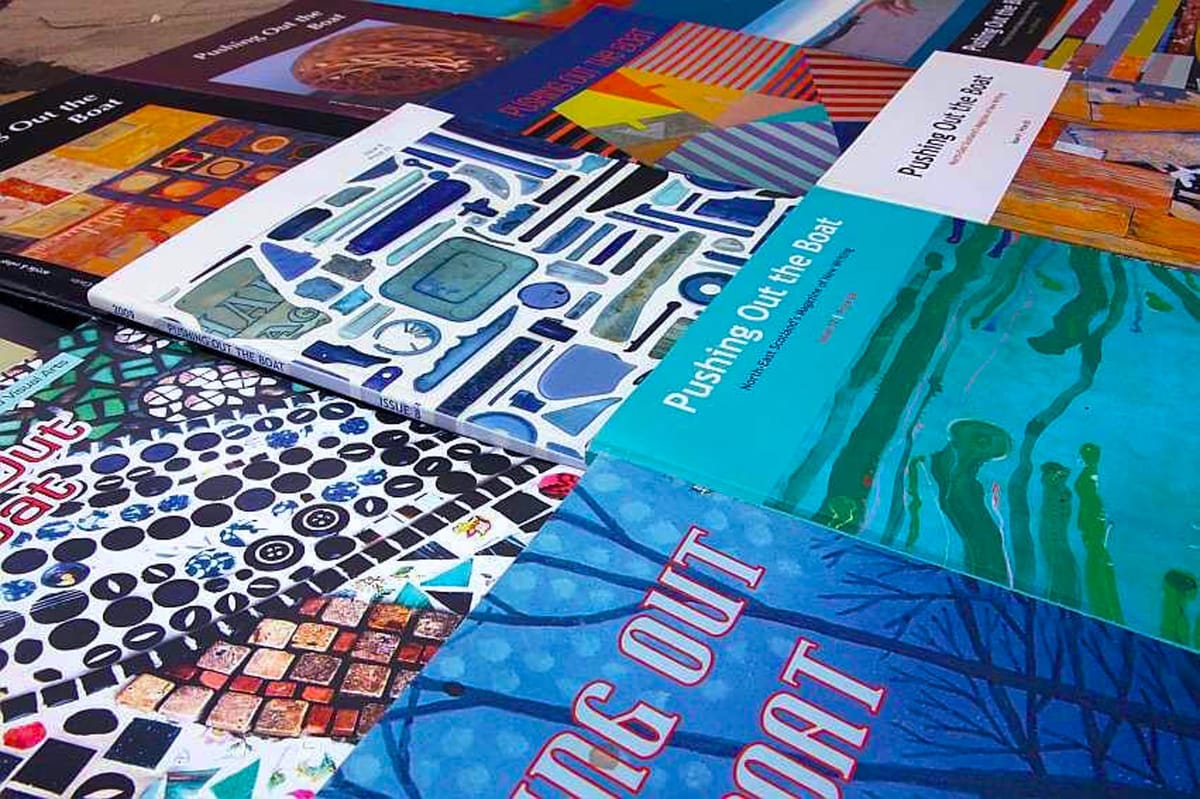
Until a few weeks ago, to my shame, I'd heard of Pushing Out the Boat magazine only in passing, despite it being a leading light in Scotland’s literary scene and arguably one of the best regional literary magazines around. It was clearly a blind spot in the POST knowledge bank.
The best solution when this happens is to reach out and make a connection.
Naomi Greenwood was kind enough to answer the call and tell me about Pushing Out the Boat. She is a key member of the magazine's team and also a final-year student at Aberdeen University, where she balances her studies in Art History and Theology with her creative pursuits in drawing, sewing, and writing.
Since its inception in 2000, Pushing Out the Boat has evolved from its predecessor The Broken Fiddle, established in 1993, to a celebrated platform welcoming voices from Scotland and beyond. The magazine embraces a spectrum from poetry and prose to playscripts and even art in forms like digital and photography.
Naomi’s role is as dynamic as the magazine itself; she manages their social media presence, writes their blog, and keeps the wheels turning with PR activities. With the magazine celebrating its 25th anniversary soon, Naomi shares insights into its journey, the eclectic mix of content, and the ongoing mission to nurture new talent alongside seasoned creatives.

How did the idea for the magazine originate, and what has been its journey to date?
Pushing Out the Boat was set up in 2000, but this wasn’t the first glimpse of the magazine. Its predecessor, The Broken Fiddle, was first published in 1993 under Iain Macauley, Banff and Buchan District Council’s Arts Development Officer.
The magazine has covered a wide range of arts from playscripts to dance and featured an advice column for budding writers. Macaulay felt it was important for the arts to be “appreciated and enjoyed by everyone”, something we strive to reflect in our welcoming of writers and artists new and established, as well as children as young as twelve.
The dawn of Pushing Out the Boat came at the turn of the century, after a three-year hiatus on The Broken Fiddle’s part. Aberdeenshire Council were its first publisher before work on the magazine was taken over entirely by volunteers. Some are still involved in its production today.
We are all proud to reach the milestone of 25 years of Pushing Out the Boat next year.
What kind of work do you publish, and how do you choose the pieces that make it into the journal?
We publish many kinds of work. We accept submissions in poetry and prose such as short stories and playscripts, and we are excited to announce we now accept Gaelic submissions. This is a new venture for the magazine and one we hope will broaden our audience even further.
We feel it is important to spotlight Scottish voices. We accept work written in Scots, Doric and English as well as Gaelic, and have taken submissions from much further afield in the past, including the United States. In terms of art, we accept many forms including abstract, digital and photography. Pushing Out the Boat is a fantastic platform for emerging artists to get their work “out there”.
Choosing pieces to go into the magazine is not a straightforward process! We have three judging panels - poetry, prose and art, and one assessor, especially for Gaelic entries. Panellists work closely to make shortlists, but some submissions are easier to reject than others.
Saying “no” to quality pieces for the sole reason we don’t have space for them in the magazine is the rejection that we hate the most. We often receive pieces of writing or art which show genuine potential but simply aren’t as strong as other submissions.
We want those who suffer rejection not to be disheartened - keep on editing, revising, and submitting!
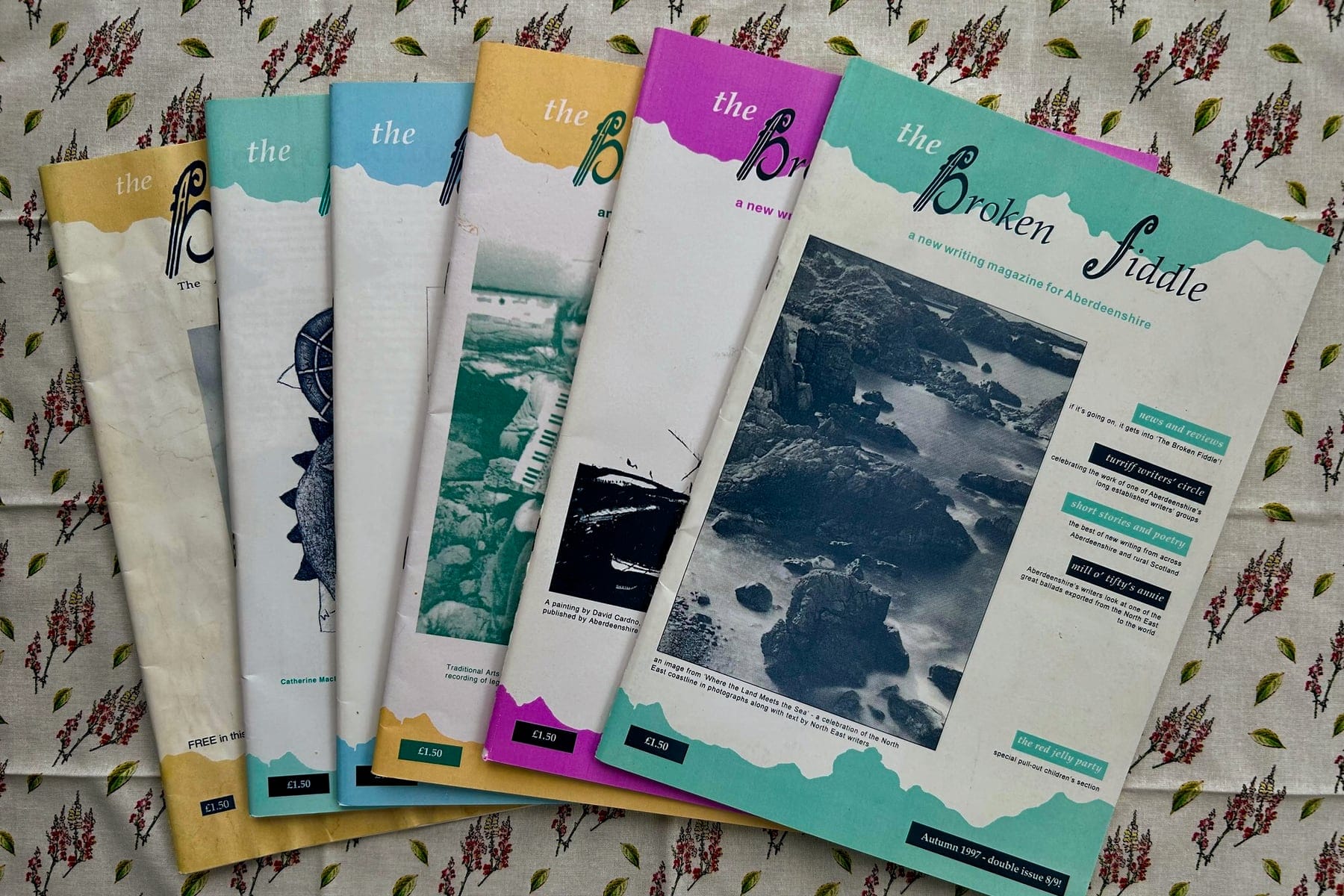
How do you balance featuring local talent with contributions from around the world?
Since submissions are viewed anonymously, the selection panellists are unaware of where the submitters come from and make their decisions on merit alone. In practice, however, the number of international submissions is relatively small in comparison with those from Scotland, resulting in a natural balance of local contributors and those from further afield.
Our strong links with Scottish writers' groups and other arts organisations mean we always get a good representation from the North East and the rest of Scotland and things seem to balance out. We ask people if they have any Scottish connections but that's more to check that we're making an impact and doesn't affect our choice of individual submissions.
Can you elaborate on your commitment to first-time writers and artists? How do you support them?
One way we encourage emerging writers and artists to submit is by focusing a large portion of our marketing to schools, universities and colleges. We highlight that the magazine is a great starting point for showcasing your work, and successful submissions are an achievement which can be added to CVs and personal statements.
When we go to publish, we hold a launch event for each magazine where writers and artists can read their pieces live and showcase their art to guests as well as chat with other contributors including those established in the arts scene. I think by welcoming new writers we are continuing Iain Macaulay’s wish that the arts be accessible to all, which feels valuable.
We host various other reading events, too, giving contributors a chance to perform their pieces. We recently enjoyed our reading event on 20th July as part of Aberdeen’s Festival of the Sea, as well as our creative writing workshop on 25th July hosted by last year’s Scots Scriver Shane Strachan.
The events were a great opportunity for young or new writers to be introduced to the local writing scene, and we hope the workshop equipped attendees with new knowledge and skills for writing about the sea and the wider world.
What challenges do you face in maintaining the high quality and unique blend of content in each edition?
We are always impressed by the high level of quality of the submissions we receive, our biggest challenge being making the selection for publication. To ensure a fresh perspective, the membership of the selection panels changes for every issue, whilst the Editor oversees the blending of the chosen material into a cohesive whole.
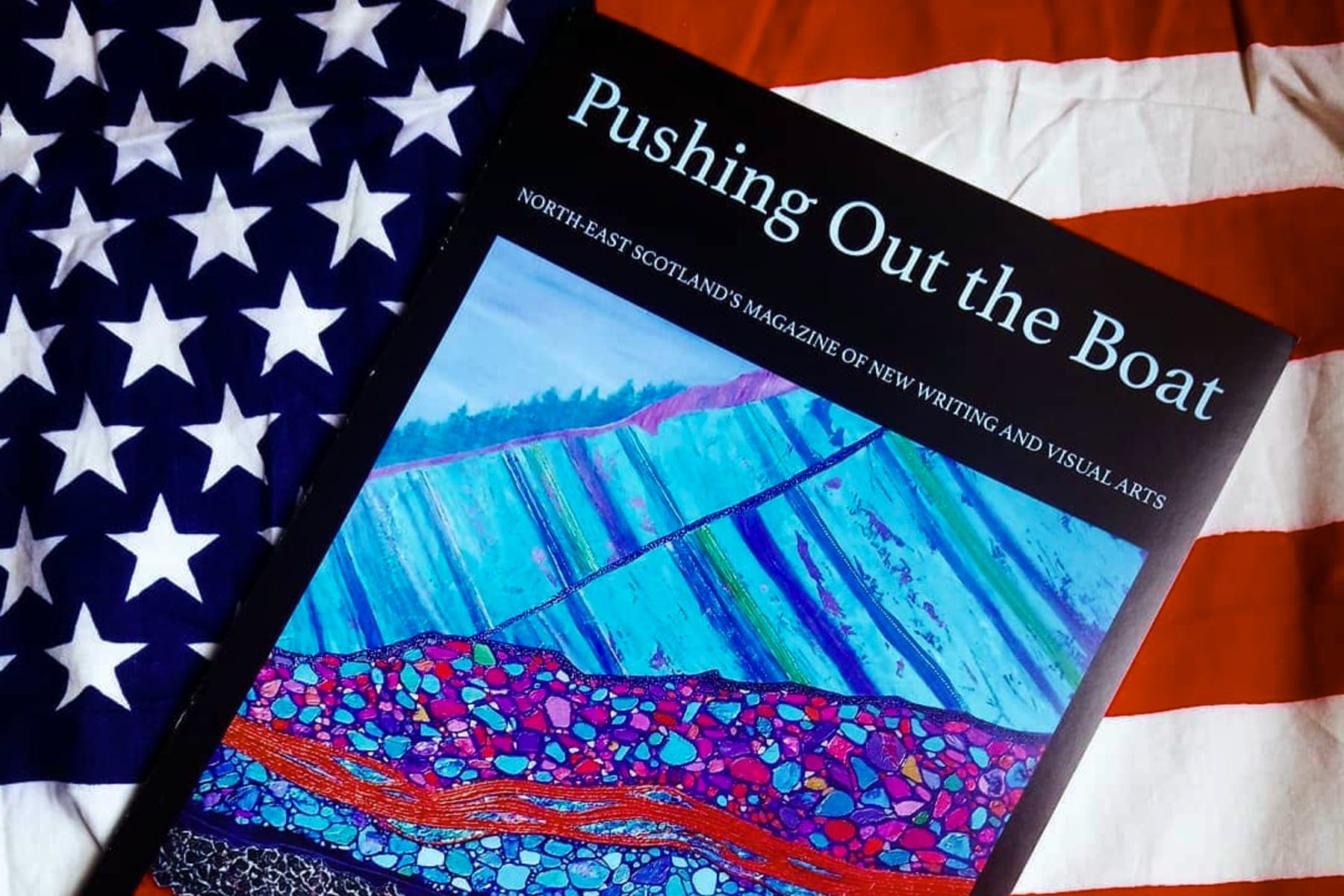
What are some of the most significant achievements or milestones Pushing Out the Boat has reached since its inception?
Probably our most significant milestone has been taking over the magazine from Aberdeen Council after the withdrawal of their support, and registering as a charity. Since then, we have pushed for positives such as collaborating with local radio station Shmu FM to produce several contributor interviews as part of Loraine Mudie’s show “Words Up”.
The development of our website was big, too, for it meant we could accept online submissions, as well as keep up with the Pushing Out the Boat blog and keep our audience involved and informed. We are proud to see the magazine reach its twenty-fifth year next year, a testament to the hard work and passion of our volunteers and, of course, contributors.
Beyond that, we value our unique position as the only magazine of creative writing and visual art in the North East, highlighting the area's considerable writing and artistic talent.
With the diverse linguistic blend in your publications, how do you ensure each voice retains its authenticity while contributing to a cohesive whole?
Our submitters do that for us! Pushing Out the Boat celebrates the individuality of each voice and piece; the contributions we receive come together to form a diverse and refreshing whole.
That’s just the exciting nature of the magazine.
What impact have you seen on local communities, especially schools and libraries, from your outreach initiatives?
Our November 2022 “Oil’s well that ends well” creative writing workshop springs to mind. Pushing Out the Boat was offered the exciting opportunity to collaborate with the University of Aberdeen and the North East’s National Decommissioning Centre in hosting a youth creative writing workshop, which took place in Ellon.
The workshop aimed to encourage young people to share their views about environmental issues and climate change and to explore these ideas in a piece of flash fiction. The pieces were then entered into a competition, which was won by S3 pupil Erin Moore. Her piece, “Then vs Now - A Time Before”, can be read on our blog.
It’s fantastic receiving submissions online and publishing them in the magazine, but just as good is the feeling of being immersed in groups of enthusiastic young people, writers and artists in the community. The opportunity to give young people a voice through an event such as this, on a topic many of them are so passionate about, is rewarding.
If we had more resources, we’d definitely continue with more outreach.
How do you see the role of Pushing Out the Boat in the broader Scottish and international literary scene?
We don't pretend that we're mainly an international magazine. But we are an important part of the huge diversity of Scottish culture. We recently enjoyed expanding our contacts in the central belt, joining Stirling Book Nook’s Forth Fridays organisers in hosting a reading event. It was a pleasure to introduce ourselves to an already thriving community of writers in the wider Scottish literary scene.
Can you share any feedback or success stories from your contributors, particularly those published for the first time in your journal?
I myself was published in the magazine’s 16th Issue when I was 17. My English teacher had suggested I submit a short story I’d written for what I think must have been my Higher portfolio, and I was surprised to see it selected for publishing.
Being on the mailing list for Pushing Out the Boat newsletters because of this, it was a couple of years ago now I received a “PR manager wanted” email and took the chance, and here I am now. I must admit reading that story back there are plenty of things I would change about it, but I’m grateful the piece was selected and that I had the chance to join such a fantastic team of volunteers.
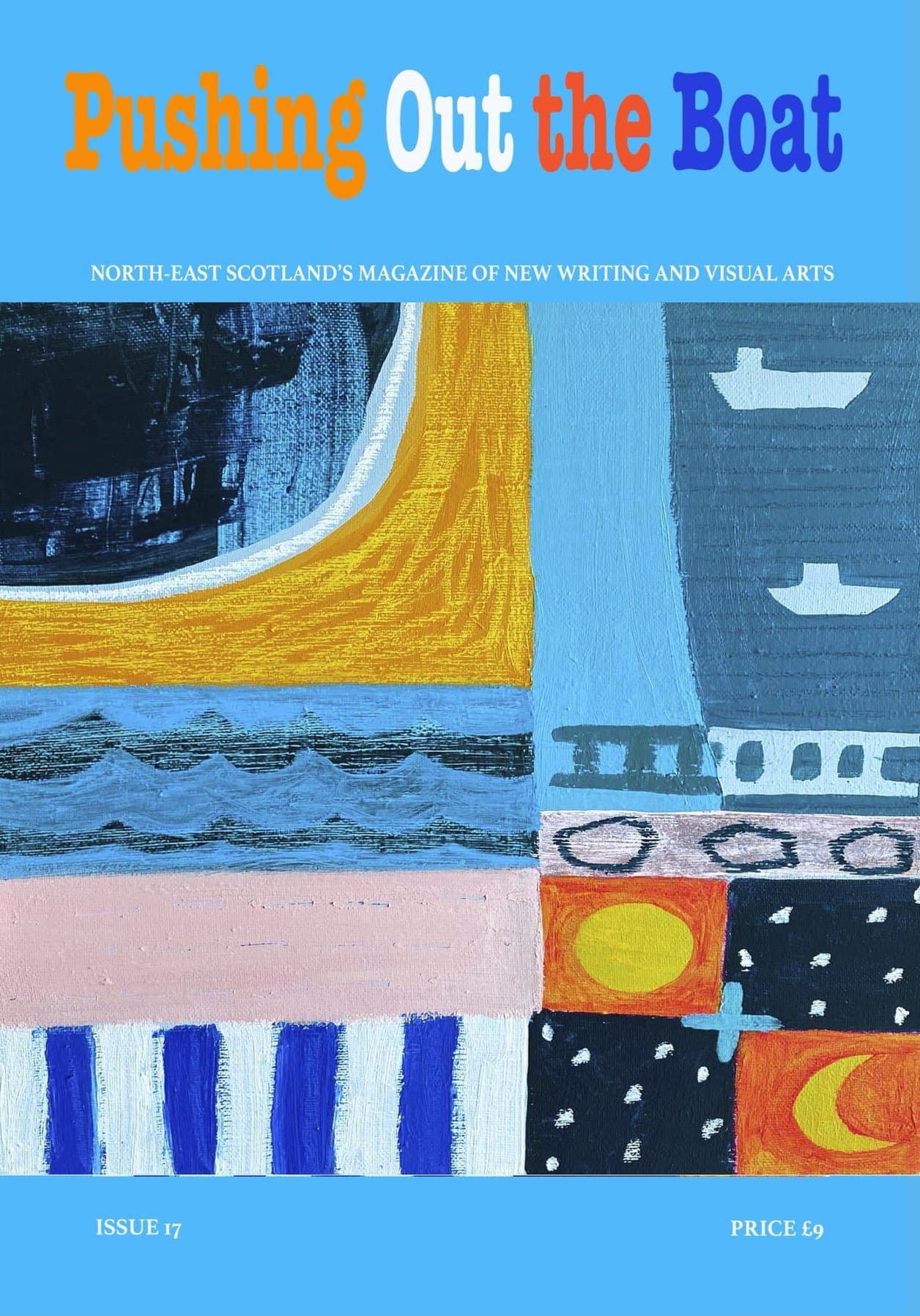
What future projects or expansions are you excited about for Pushing Out the Boat?
As I mentioned, we are excited to be celebrating 25 years of Pushing Out the Boat next year - maybe we will do something special to mark the occasion.
Watch this space…
How do you envision the journal’s role in promoting Scottish dialects and languages, such as Doric and Gaelic, in the coming years?
Well, we've always promoted Doric writing and now that we're accepting Gaelic entries we aim to continue highlighting Scottish language and what it means to our contributors.
How are you enhancing the accessibility of Pushing Out the Boat, and are there any ongoing efforts to provide digital editions or other formats that complement the print magazine?
We currently have digitised versions of all publications up to Issue 16, in the form of an interactive online copy. Not only does this make the magazine more accessible, but it also means potential contributors can browse previous issues for inspiration and guidance - especially when it comes to submitting pieces of art, for the category of visual art is so broad.
What advice would you give aspiring writers and artists looking to write for Pushing Out the Boat?
Go for it! The quote from poet Sheena Blackhall seems appropriate: ‘To see your work published is such a fantastic thing. That said, it doesn’t always happen on the first, second or even eighth attempt, but when, and if, it does, it’s wonderful to know that people are reading, and enjoying your work.’
Thank you to Naomi Greenwood for sharing her insights and the inspiring journey of Pushing Out the Boat magazine. It's incredible to see the dedication and passion behind this beloved publication. If you want to learn more about Pushing Out the Boat or submit your own work for Issue 18, you can find all the details on their website.
We encourage all aspiring writers and artists to take this opportunity to showcase their talents and be part of this celebrated magazine.




